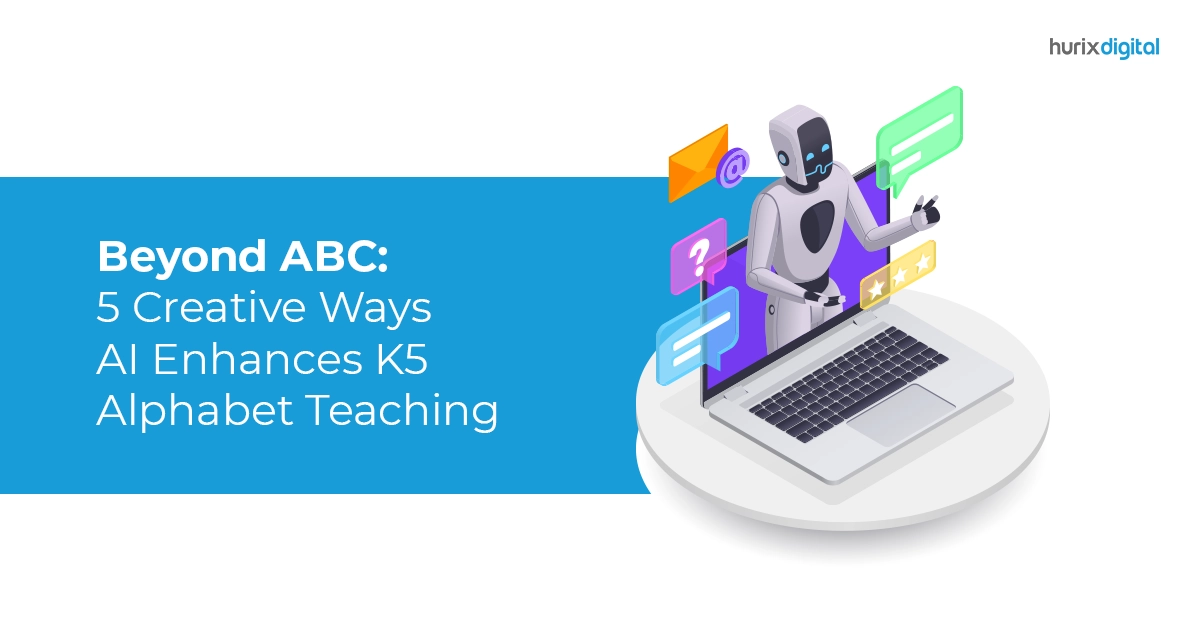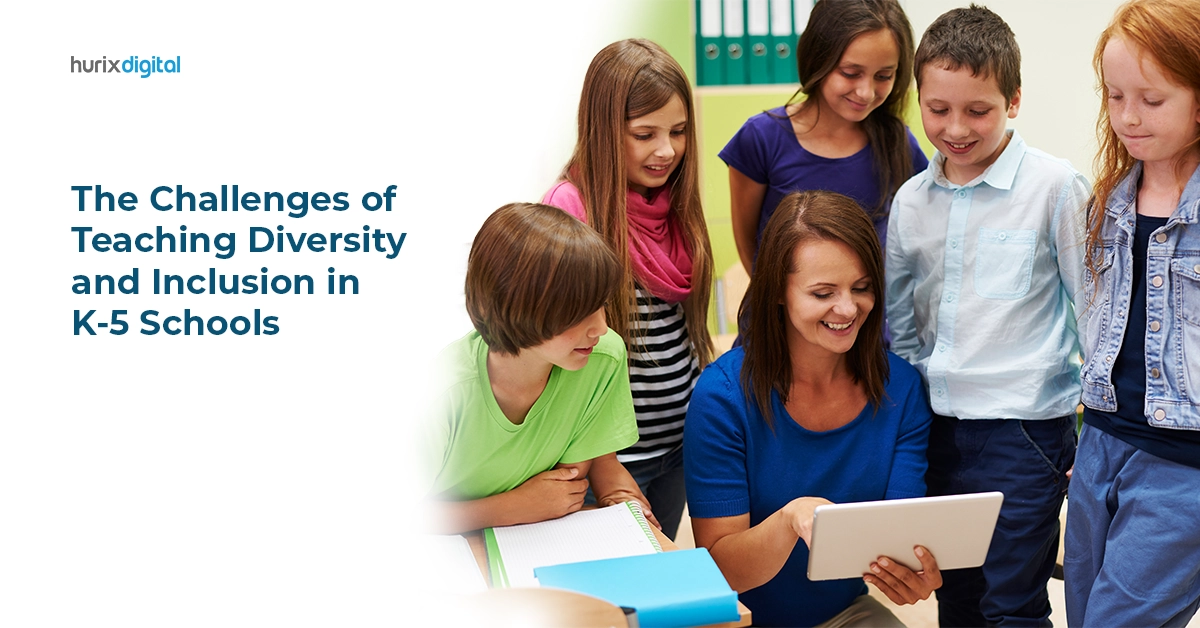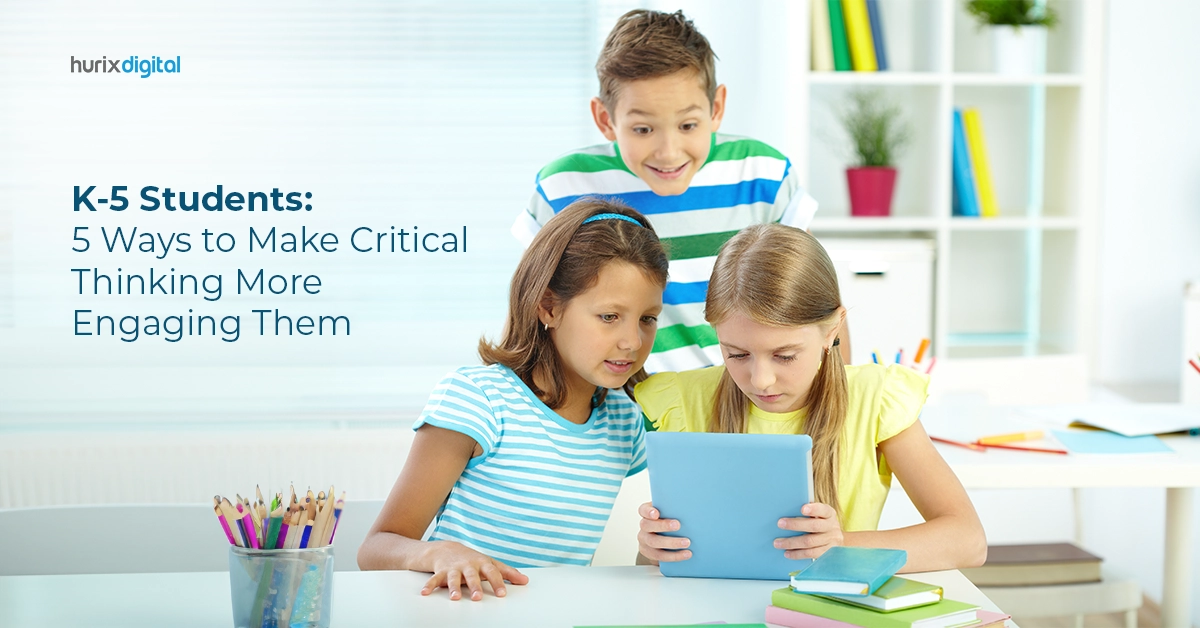Summary
This article provides a comprehensive overview of the various creative ways AI can be incorporated in the field of education.
In a survey conducted by the Walton Family Foundation in July, about 33% of teachers use the AI-driven tool- ChatGPT for formulating creative ideas for classes. Isn’t this interesting?
The emergence of ChatGPT earlier this year took the world by storm and sparked quite a debate among the community of educators and learners alike.
Education is undergoing an upheaval right now, with discussions centered on the use of cloud solutions and open-source platforms. Amid all of this, the emergence of artificial intelligence (AI) stands out as one with promise, even with the ethics storm that it has stirred.
The novel technology solution offers process improvements, workload reduction, problem-solving, improved safety measures, communication outreach, and much more. Let’s examine it further.
Table of Contents:
How Can AI Help Explore Innovative Teaching Methodologies?
The global AI industry is undergoing a massive scale-up in the field of education. Teachers are actively expressing their desire to incorporate the functionality and usability of AI in their curriculum design and instruction strategies.
With a CAGR surpassing 10% from 2023-2032, the shifting preferences and perceptions towards the benefits of employing AI are clear. Early childhood education is an all-encompassing facet of teaching and honing crucial developmental skills among children.
Whether it’s teaching the alphabet or critical thinking, all of it serves as a foundation for learning pathways essential for different levels of education.
Teachers often speculate about how to make their teaching methods more compelling and creative so that students can retain concepts better. Today, we have compiled five out-of-the-box creative approaches along with AI to help teachers share greater insights:
1. Gamification- Interactive Learning Methods
One of the most rewarding forms of teaching is the one where learning is more of an experience rather than a method of evaluating students.
Every one of us likes playing games, whether it’s online or offline. Children thrive in such experiential environments where reasoning and several analytical skills are taught through games.
Imagine a game like Takeshi’s Castle for an AI-enhanced learning of the alphabet. The adrenaline-pumping excitement will keep the children on their toes and in anticipation of the next move in the game.
Artificial intelligence can assist you by laying all the groundwork necessary for curating clues and levels of the game. All you need to do is ensure that children turn up and play to their heart’s content.
Apart from curating interesting games, teachers can also employ the strategy to incentivize the learning model in gamified education.
For instance, you can organize scavenger hunts where each letter holds the next clue, and with every step, children unlock levels to proceed ahead in the game. You can prepare leaderboards and award the winners with badges and fun prizes to keep kids engaged and excited about the game.
Also Read: Transforming Education with Smart Classrooms: The Role of AI
2. Incorporation of AI in Tutoring and Grading
Teachers are usually weighed down by excessive workloads and assessments wherein you hardly get time to devise creative methods to teach kids. With K5 education, it is much more difficult to spend time with them and keep them engaged.
In the formative years of their development, children are easily distracted and get bored fast. You can’t expect them to pay attention to the alphabet if your teaching method is obsolete.
Today’s education landscape is constantly evolving with the influx of AI and other educational technology-enabled tools. It’s time to introduce children to the beauty of AI tutoring, which not only tracks their progress but also suggests innovative methods to teach which is highly specific to the student’s needs and preferences.
For example, you can identify the students struggling with the diction and phonetics of a particular letter with AI monitoring capabilities. They can catch slight inconsistencies and report them. Also, AI in education proves to be a reliable assistant when it comes to grading assignments.
All you need to do is add your input of the key parameters and the corresponding score.
3. Open and Versatile Learning Environments
Imagine learning the alphabet in diverse learning environments like the planetarium or the park. Children learn better and faster with visual cues, aids, and props.
You can use videos curated by artificial intelligence to transport the kids to environments of their choice. They can choose the setting and learn in an adaptive preference, which is different yet inclusive.
Such open and flexible learning styles can be adopted by teachers while planning quizzes or assignments so that students have an AI-driven curriculum tailored to their interests. AI can easily help in simulation-based scenarios where the child can learn more than ABC in the environment.
This not only facilitates creativity in the minds of the children but also the capacity to be curious and question during the learning process.
4. Tailored Educational Curricula
Each student has varied areas of strengths of weaknesses. You can determine and help in improving their comprehension by taking the assistance of generative AI interfaces.
Depending upon the challenges being faced by the students, you can decide which part of the language learning requires more focus, like pronunciation or spelling.
AI will help you prepare lesson plans catering individual needs of students. You can check on their performance in real-time and modify the curriculum design right away.
Similarly, you can assess the success rate of the teaching method through predictive data analysis provided by AI. Hence, you can come prepared with an optimized instruction plan and design which has the highest success rate.
After all, AI-driven tools can be customized to automate various workflows of the teaching style. You will have an AI-enabled assistant at all times.
For instance, Siri and Alexa are the best examples in today’s scenario. They can be trained to work as per your prompts and deliver the best possible solutions to the scenarios.
Imagine such an integration while you’re teaching the alphabet. Won’t it be the ultimate lifesaver for you?
5. Empowering Inclusivity For All Types of Learners
Education is all about welcoming learners with open arms. Students with learning disabilities and challenges are diverse lot that require special care and attention.
Teachers can take the assistance of AI, which will do more than teach. It will support the children through the journey and work with them to improve their ability to understand.
You can program AI-based tools to deliver results efficiently and accurately for special needs students. After you create a profile input of the students’ needs and preferences, you can ask the AI to generate a lesson plan and methods to help the students learn in a thriving environment.
You don’t wish to make them feel different, and that’s where AI steps in.
Also Read: 7 Roles of Artificial Intelligence in Learning and Development
Key Takeaways
The future is at our fingertips- digital and disruptive. AI is a trend that is here to stay, and educators are beginning to accept its importance. Even though it is enigmatic, the simplicity with which it can assist us in early childhood education Is impressive. As teachers, it’s time to embrace technology and use it to revolutionize the education sector.
Hurix Digital believes in AI-powered tools in a personalized learning platform that can streamline workflows and increase the efficiency of learning goals. With adaptive learning preference, we are prepared to help teachers with instructional methods and strategies that promote active participation and encourage feedback.
Are you interested in trying out our innovative approaches?
Get in touch with us!










